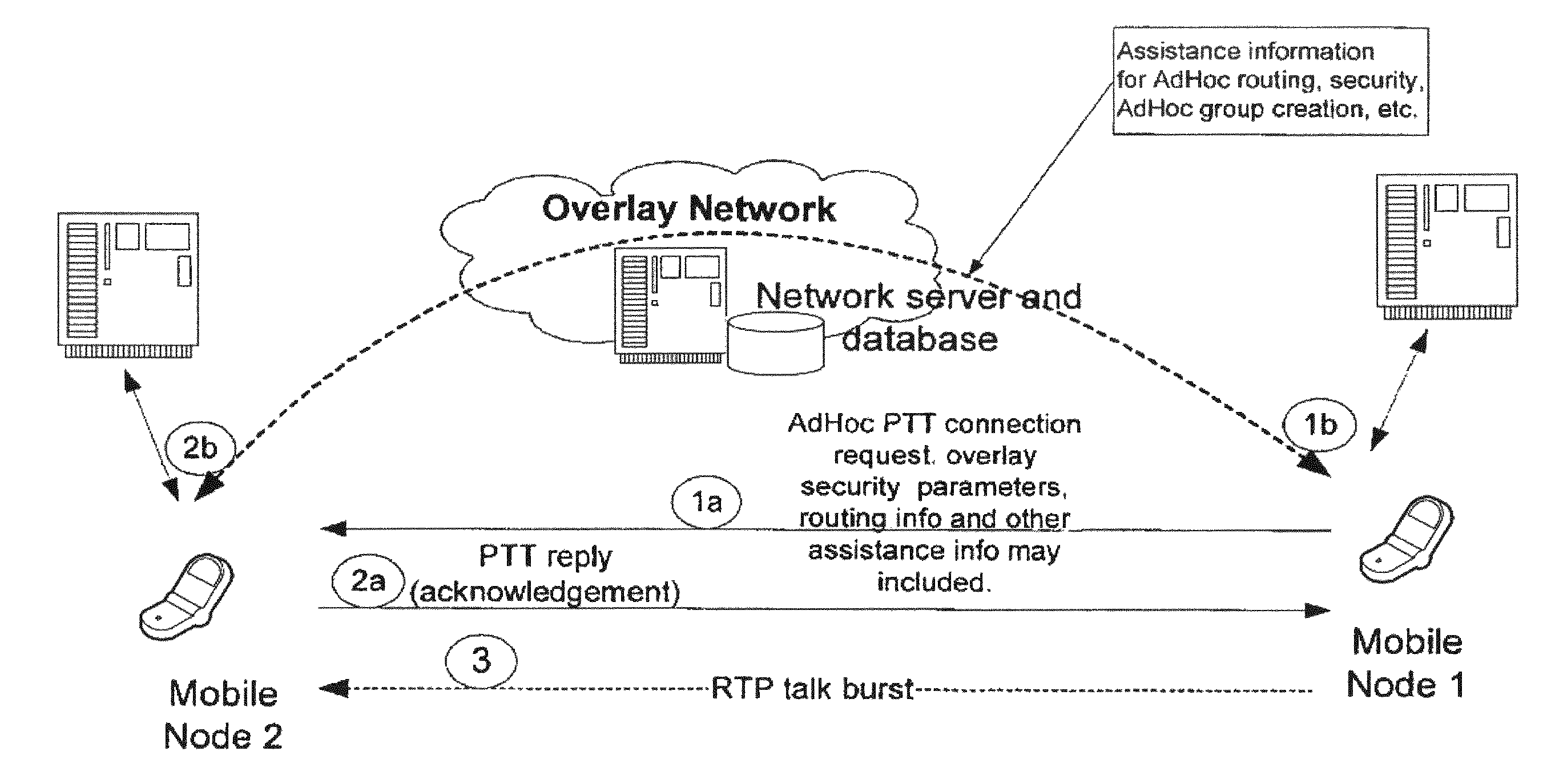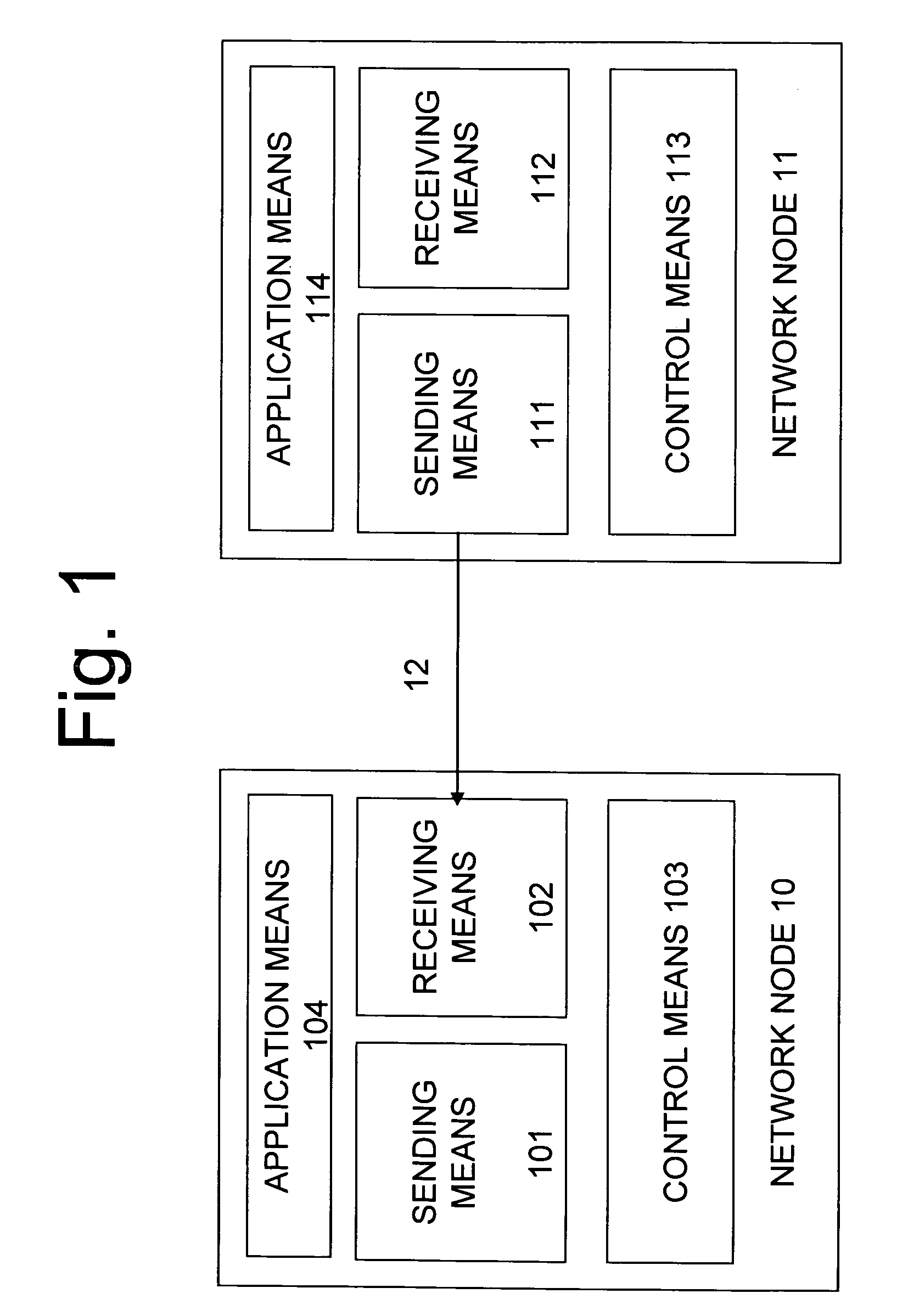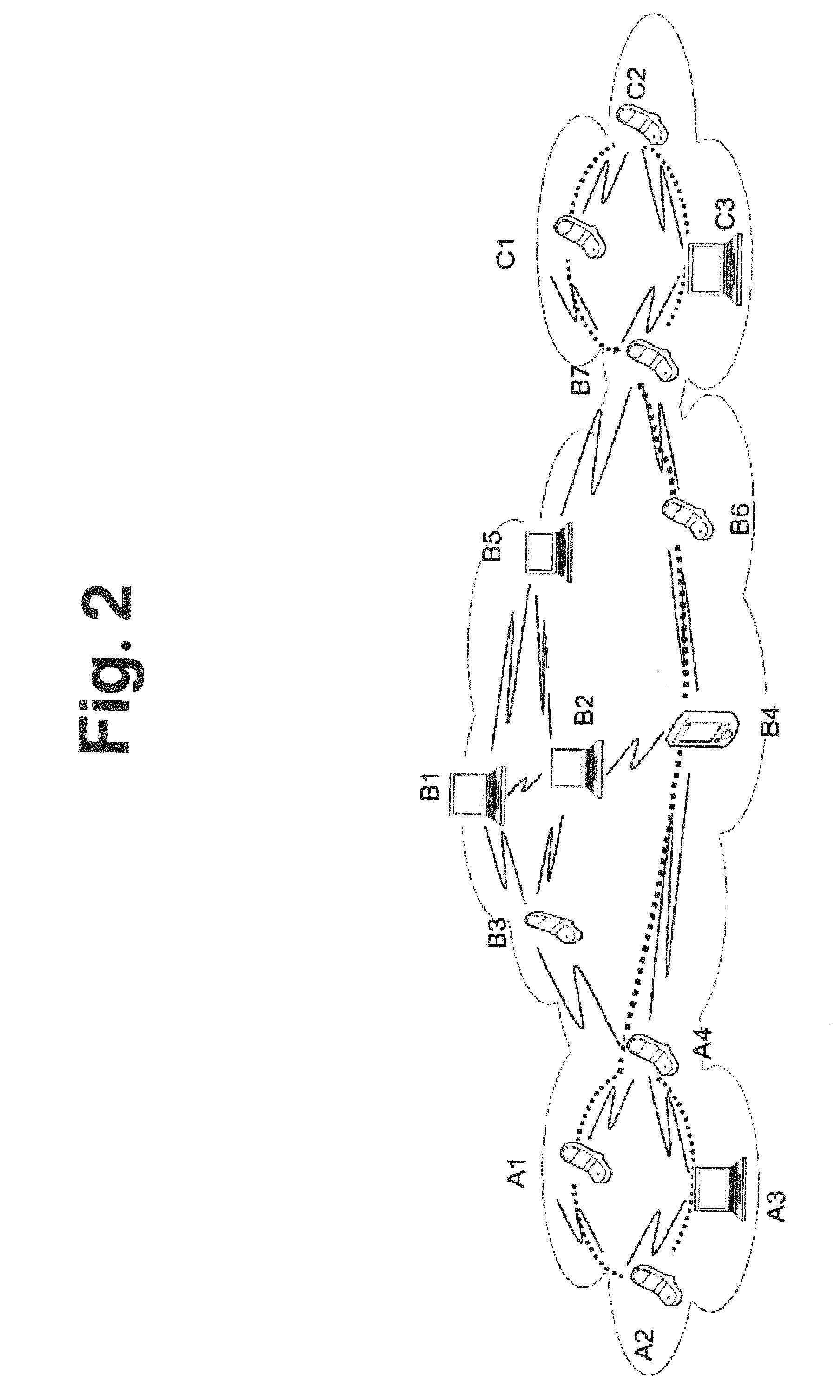Push-to talk over Ad-Hoc networks
a technology of ad-hoc networks and push-to-talk, applied in the field of network systems, can solve the problems of high load on the current network, inability to provide services properly and cost-effectively,
- Summary
- Abstract
- Description
- Claims
- Application Information
AI Technical Summary
Benefits of technology
Problems solved by technology
Method used
Image
Examples
first embodiment
[0040]The first embodiment is illustrated in FIG. 2. Here, three groups of network nodes are shown, wherein the network nodes concerned may be mobile phones, PDAs (Personal Digital Assistant devices), computers having a wireless connection and the like. The first group is formed by the network nodes A1 to A4. The second group is formed by the network nodes B1 to B7 and network node A4 which is also a member of the first group. The third group is formed by the network nodes C1 to C3 and the network node B7 being also a member of the second group. In this configuration, multi-hops are possible. For example, the first group may contact the third group via the second group. That is, a member of the first group (e.g., network node A2) can start a push-to talk call to the third group, which is forwarded to the third group via the network nodes B4 and B6 of the second group. This is the so-called multihop scheme.
[0041]In the following it is shortly described how, for example, network node ...
fourth embodiment
[0049]As an alternative to the option a) described above, the Ad Hoc multihop routing may be executed with the assistance of the overlay network elements / servers or other elements like local servers. This is described in the following as a fourth embodiment and is described by referring FIGS. 4 to 6.
[0050]In detail, FIG. 5 illustrates the signalling connection setup for a direct Ad hoc network connection via cellular network.
[0051]A server may also act as a serving Base Station (BS) or overlay network server(s) to which the Ad Hoc node has been registered or is under its control. As illustrated, this server may provide assistance information for AdHoc Routing, security, AdHoc group creation etc. This server may be a dedicated PoH server, or may be integrated in a server of the overlay network. The server may comprise a storage means such as a database in which the necessary information are stored.
[0052]Thus, in the illustrated example, the mobile node (e.g. Node 1 in FIG. 5) request...
third embodiment
[0091]For example, the PoH server described in connection with the third embodiment and illustrated in FIG. 4, which serves to assist in establishing a connection between the two ad hoc groups, can play the role of the server shown in FIG. 5, i.e., to assist, for example, the network nodes in the individual groups to create the group or establish a connection within the group.
[0092]Moreover, as already indicated above with respect to text chat, the messages transmitted via the push-to talk service are not limited to voice messages. These voice messages are only an example for information transmitted between the network nodes. That is, also other kind of messages such as text messages, multmedia messages (image, video clips, music, etc.) and the like can be transmitted via the push-to talk service according to the invention.
[0093]Furthermore, according to the embodiments described above, a half-duplex radio connection is used for providing a direct contact between the network node. H...
PUM
 Login to View More
Login to View More Abstract
Description
Claims
Application Information
 Login to View More
Login to View More - R&D
- Intellectual Property
- Life Sciences
- Materials
- Tech Scout
- Unparalleled Data Quality
- Higher Quality Content
- 60% Fewer Hallucinations
Browse by: Latest US Patents, China's latest patents, Technical Efficacy Thesaurus, Application Domain, Technology Topic, Popular Technical Reports.
© 2025 PatSnap. All rights reserved.Legal|Privacy policy|Modern Slavery Act Transparency Statement|Sitemap|About US| Contact US: help@patsnap.com



